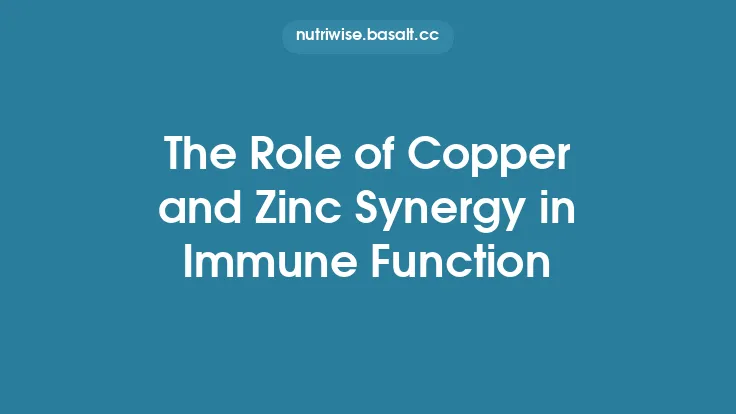Magnesium is the fourth most abundant mineral in the human body and a pivotal cofactor in over 300 enzymatic reactions. Its influence extends far beyond bone health and muscle function; it plays a critical role in the pharmacokinetics and pharmacodynamics of many prescription and over‑the‑counter (OTC) medications. Understanding how magnesium interacts with drug absorption, distribution, metabolism, and excretion (ADME) can help clinicians optimize therapeutic outcomes while minimizing adverse effects.
Magnesium’s Physiological Functions Relevant to Drug Interaction
- Electrolyte Balance and Membrane Potential
Magnesium stabilizes the resting membrane potential of cells by competing with calcium at voltage‑gated channels. This modulation affects the transport of ions and, consequently, the movement of drug molecules across epithelial barriers.
- Enzyme Cofactor
As a cofactor for ATP‑dependent enzymes, magnesium influences the activity of kinases, phosphatases, and transport proteins such as P‑glycoprotein (P‑gp) and organic anion transporting polypeptides (OATPs). These transporters are central to the intestinal uptake and hepatic clearance of many drugs.
- Gastrointestinal Motility
Magnesium salts (e.g., magnesium hydroxide, magnesium citrate) are osmotic laxatives that increase intestinal water content and accelerate transit time. Faster transit can reduce the window for drug dissolution and absorption.
- pH Modulation
Certain magnesium formulations raise gastric pH, which can alter the ionization state of weak acids and bases, thereby influencing their solubility and absorption profile.
Mechanisms by Which Magnesium Affects Drug Absorption
1. Complex Formation (Chelation)
Magnesium can form coordination complexes with drugs that possess carboxyl, phenolic, or phosphate groups. These complexes are often less soluble, leading to reduced absorption. Classic examples include:
- Tetracycline antibiotics – magnesium chelation markedly diminishes oral bioavailability.
- Bisphosphonates – magnesium ions can bind to the phosphonate moiety, impairing intestinal uptake.
2. Alteration of Gastric pH
Magnesium antacids (e.g., magnesium hydroxide) neutralize gastric acid, raising pH. This shift can:
- Increase absorption of drugs that are more soluble in alkaline environments (e.g., certain antifungals).
- Decrease absorption of drugs that require an acidic milieu for dissolution (e.g., ketoconazole, atazanavir).
3. Modulation of Transporter Activity
Magnesium status influences the expression and function of several drug transporters:
- P‑glycoprotein (P‑gp) – Low intracellular magnesium can up‑regulate P‑gp, enhancing efflux of substrates such as digoxin and certain chemotherapeutics, thereby lowering systemic exposure.
- Organic Cation Transporter 2 (OCT2) – Magnesium deficiency may reduce OCT2 activity, affecting renal clearance of drugs like metformin.
4. Impact on Intestinal Motility
When administered as a laxative, magnesium accelerates bowel movements, potentially truncating the absorption phase for drugs that require prolonged contact with the intestinal mucosa (e.g., extended‑release formulations).
Influence on Specific Drug Classes
| Drug Class | Representative Agents | Primary Interaction Mechanism | Clinical Implication |
|---|---|---|---|
| Antibiotics (Tetracyclines, Fluoroquinolones) | Doxycycline, Ciprofloxacin | Chelation → reduced solubility | Separate magnesium supplementation by ≥ 2 h before/after the antibiotic |
| Cardiovascular Agents | Digoxin, Calcium channel blockers | P‑gp modulation, electrolyte competition | Monitor serum digoxin levels; avoid high‑dose magnesium infusions in patients on digoxin |
| Antidepressants (SSRIs, Tricyclics) | Sertraline, Amitriptyline | Altered gastric pH affecting dissolution | No major effect reported, but caution with high‑dose magnesium antacids |
| Antidiabetic Drugs | Metformin, Sulfonylureas | OCT2 activity, renal clearance | Magnesium deficiency may increase metformin plasma concentrations; consider magnesium repletion in hypomagnesemic patients |
| Chemotherapeutics | Anthracyclines (doxorubicin), Platinum agents | P‑gp efflux, DNA repair enzyme co‑factor | Low magnesium can heighten toxicity; prophylactic magnesium supplementation is common in cisplatin regimens |
| Anticonvulsants | Phenytoin, Carbamazepine | Enzyme induction, protein binding | Magnesium deficiency may lower seizure threshold; supplementation can improve seizure control |
| Bisphosphonates | Alendronate, Risedronate | Chelation → poor absorption | Administer bisphosphonates with plain water, avoid magnesium‑containing antacids for at least 30 min |
Clinical Considerations and Dosing Strategies
Assessing Magnesium Status
- Serum Magnesium: While convenient, serum levels reflect only ~1 % of total body magnesium and may be normal despite intracellular deficiency.
- Red Blood Cell (RBC) Magnesium or Ionized Magnesium: More accurate for chronic deficiency.
- Clinical Indicators: Muscle cramps, arrhythmias, refractory hypokalemia, or unexplained neuromuscular irritability.
Timing of Administration
- Separate Doses: For drugs known to chelate magnesium (e.g., tetracyclines, bisphosphonates), advise a minimum 2‑hour gap before or after magnesium supplementation.
- Concurrent Use: When magnesium is required for therapeutic reasons (e.g., magnesium sulfate in pre‑eclampsia), monitor drug levels closely and adjust dosing as needed.
Formulation Choice
- Oral vs. Intravenous: IV magnesium bypasses the gastrointestinal tract, eliminating chelation concerns but still influencing renal clearance and transporter activity.
- Magnesium Salt Type: Magnesium oxide has lower bioavailability compared to magnesium citrate or glycinate; the latter may be preferable when a therapeutic magnesium effect is desired without excessive GI irritation.
Dose Adjustments
- Renal Impairment: Reduced magnesium excretion can lead to accumulation, potentiating interactions with drugs cleared renally (e.g., digoxin). Dose reductions or more frequent monitoring may be required.
- High‑Dose Magnesium Therapy: In conditions like severe asthma or eclampsia, large IV boluses can transiently alter cardiac conduction and interact with QT‑prolonging agents; ECG monitoring is advisable.
Potential Risks and Monitoring
- Hypermagnesemia
- Symptoms: Hypotension, bradycardia, respiratory depression, neuromuscular blockade.
- Risk: Exacerbates the depressant effects of calcium channel blockers and certain antiarrhythmics.
- Electrolyte Shifts
- Magnesium competes with calcium and potassium at cellular sites. Over‑supplementation can precipitate hypocalcemia or hypokalemia, each of which may modify the efficacy of drugs that rely on these ions (e.g., diuretics, ACE inhibitors).
- Renal Toxicity
- In patients receiving nephrotoxic agents (e.g., aminoglycosides, cisplatin), magnesium depletion can worsen renal injury, while excess magnesium may mask early signs of nephrotoxicity.
- Drug‑Specific Monitoring
- Digoxin: Check serum levels when initiating or discontinuing magnesium therapy.
- Metformin: Monitor for lactic acidosis in severe hypomagnesemia.
- Cisplatin: Routine magnesium supplementation is standard to reduce nephrotoxicity and ototoxicity.
Practical Recommendations for Patients and Clinicians
- Medication Review: Conduct a thorough medication reconciliation that includes OTC supplements, antacids, and laxatives containing magnesium.
- Education: Inform patients that “magnesium tablets” are not interchangeable with “magnesium‑containing antacids” regarding interaction potential.
- Standardized Protocols: For high‑risk regimens (e.g., cisplatin chemotherapy), implement protocolized magnesium supplementation (e.g., 8 mmol MgCl₂ IV before and after infusion).
- Laboratory Follow‑up: Schedule periodic magnesium level checks, especially when patients are on long‑term diuretics, PPIs, or have malabsorption syndromes.
- Individualized Dosing: Tailor magnesium dose based on dietary intake, comorbidities, and concurrent drug therapy rather than using a “one‑size‑fits‑all” approach.
Future Directions and Research Gaps
- Pharmacogenomics: Emerging data suggest that genetic variants in magnesium transporters (e.g., TRPM6, SLC41A1) may influence individual susceptibility to drug‑magnesium interactions. Large‑scale studies are needed to translate these findings into clinical practice.
- Nanoparticle Formulations: Investigating whether magnesium‑based nanocarriers can enhance drug delivery while mitigating chelation risks.
- Real‑World Evidence: Leveraging electronic health records to quantify the impact of magnesium supplementation on drug efficacy outcomes across diverse populations.
- Inter‑Mineral Dynamics: While this article isolates magnesium, the interplay between magnesium, calcium, and phosphate in drug metabolism warrants integrated research to develop comprehensive supplementation guidelines.
By appreciating magnesium’s multifaceted influence on drug absorption and efficacy, healthcare providers can make informed decisions that enhance therapeutic success and safeguard patient safety. Thoughtful assessment of magnesium status, strategic timing of supplementation, and vigilant monitoring are the cornerstones of optimal micronutrient‑medication management.





